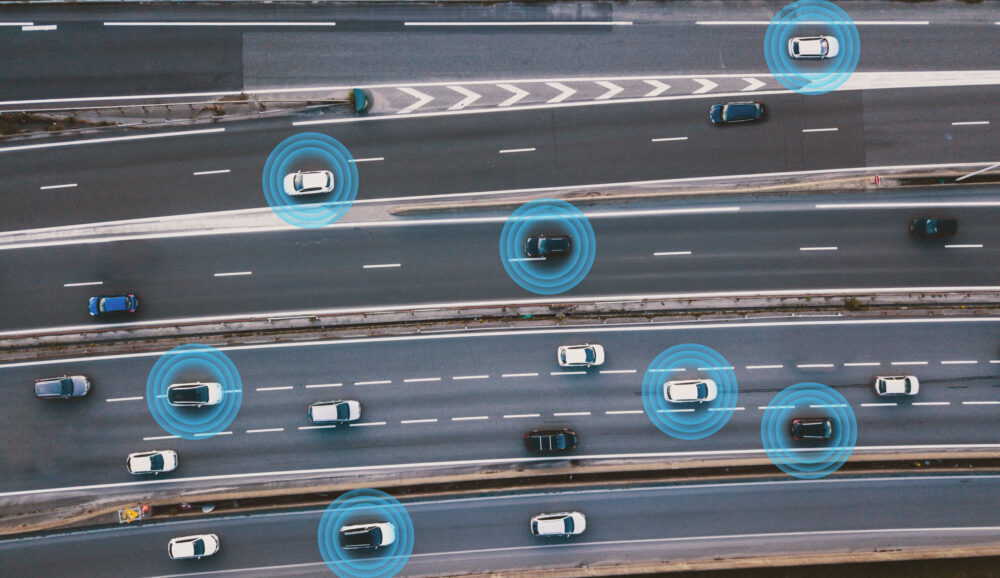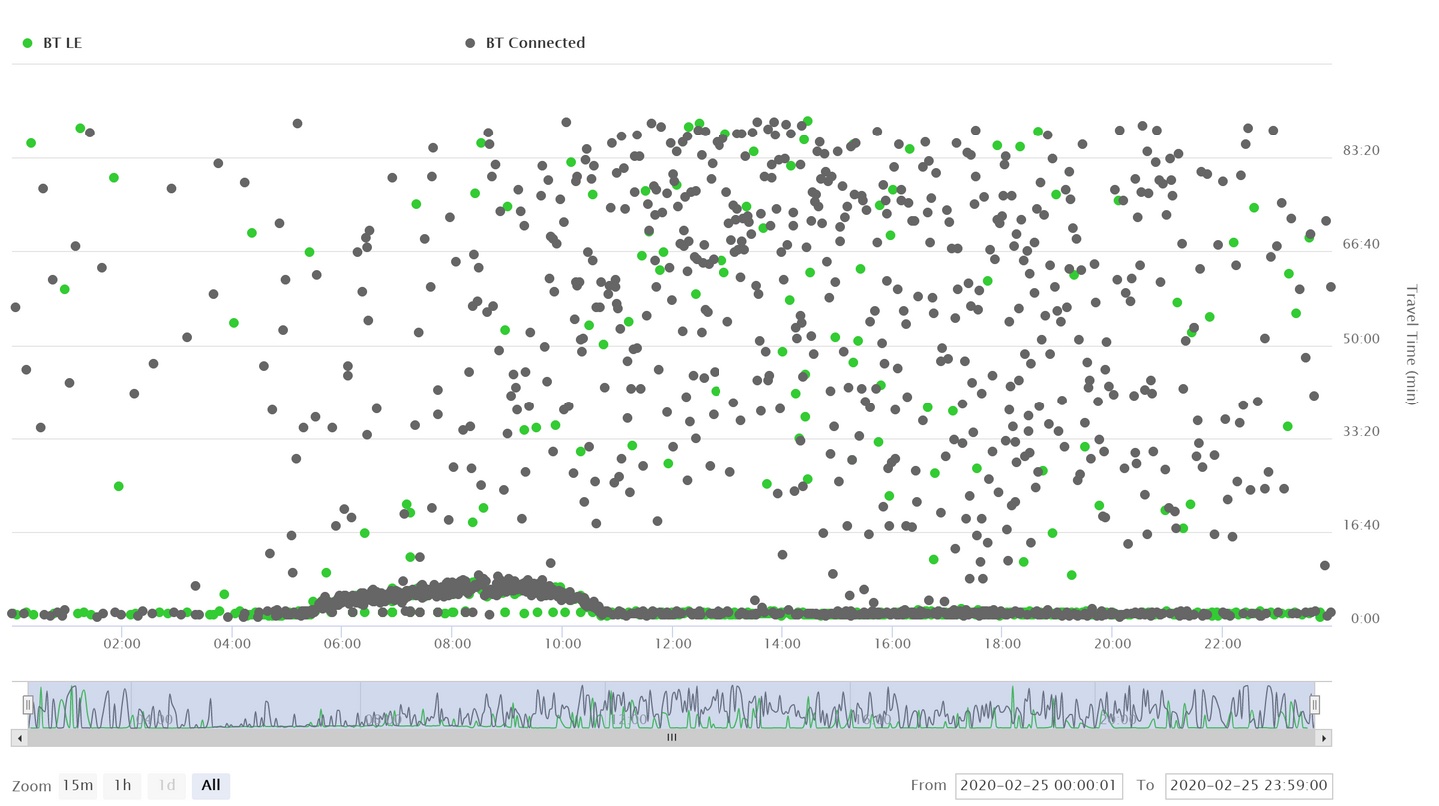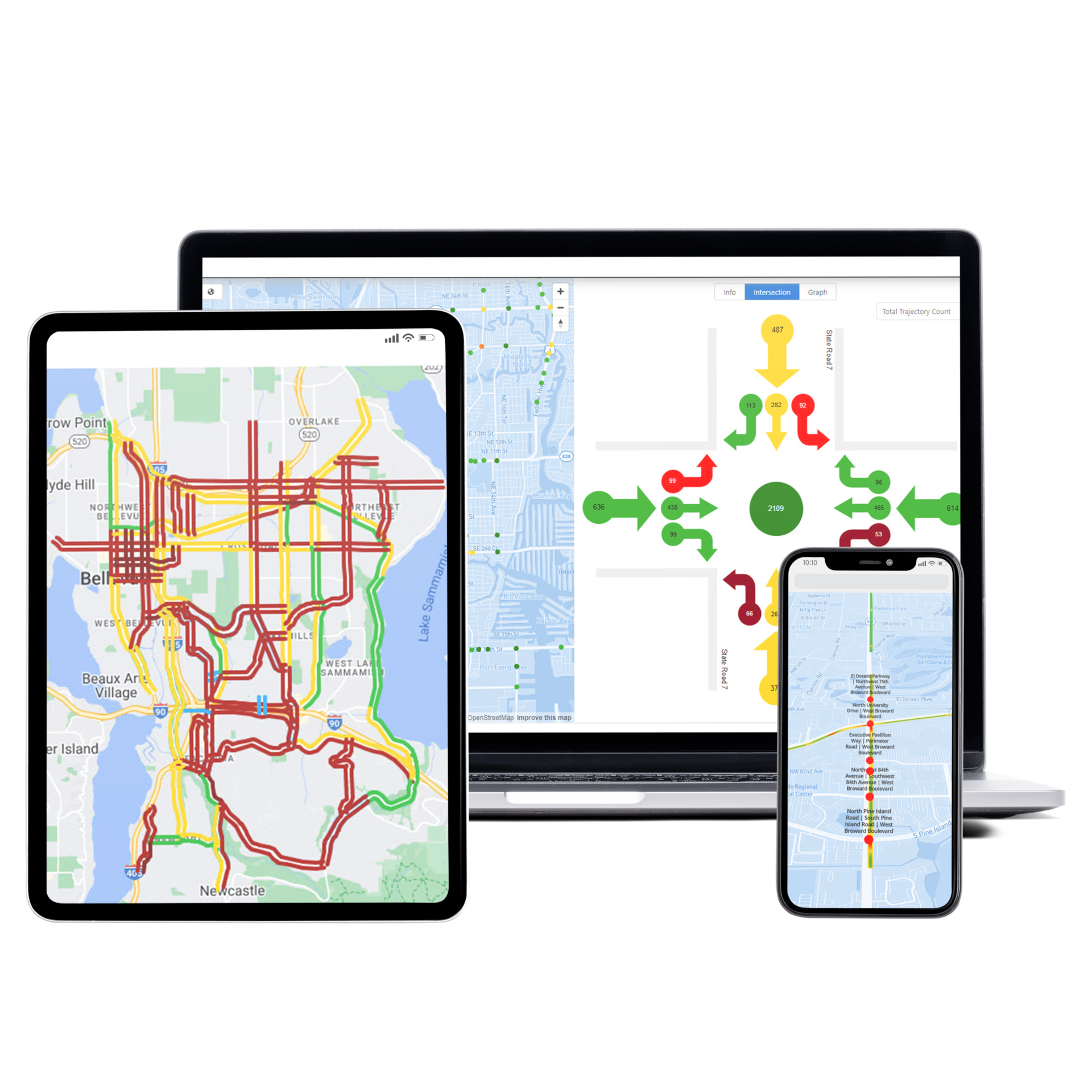PROVIDING ACCURATE TRAVEL TIME ESTIMATION TO MOTORISTS ON THE 401
Innovative technology significantly improves declining low detection rates by legacy Bluetooth sensorsThe Ministry of Transportation of Ontario (MTO)

OVERVIEW
Highway 401 is an Ontario freeway that stretches 828 km, connecting the borders of Ontario-Quebec to Windsor-Detroit. The highway passes through southwest, central, and eastern Ontario, making it popular for intra-provincial travel.
Highway 401 is one of the busiest highways in the world with the Toronto connection receiving approximately 400,000 vehicles per day. This causes extensive congestion, especially during rush hour.
THE MINISTRY OF TRANSPORTATION
OF ONTARIO (MTO)
The MTO is responsible for the transportation infrastructure, license administration, innovation and progress, and integration of Ontario roadways. The goal of this ministry is “to move people and goods safely, efficiently and sustainably across Ontario to improve quality of life and support a globally competitive economy”.
The Ministry of Transportation of Ontario (MTO) regularly monitors the volume, speed, and travel times of Highway 401 segments throughout the day. MTO then posts travel time information during the peak periods on Variable Message Signs (VMS), which are available to drivers at key locations on the highway.
Company Name: The Ministry of Transportation of Ontario (MTO)
Date: June, 2019
Website: https://www.ontario.ca/page/ministry-transportation
THE CHALLENGE
Declining detection rates have been the main concern of traffic practitioners. Bluetooth travel time sensors, which detect Bluetooth devices set to Discoverable mode, have set the industry standard with a detection rate between 2% – 5% of the traffic.
These low detection rates can produce a statistically unreliable sample of travel time data and estimation of an origin-destination matrix. In addition, the declining detection rates present in this technology are even more problematic, especially when the variance of travel time increases.

THE SOLUTION
In the Summer of 2019, four TrafficXHub™ sensors were installed on Highway 401 in Toronto. SMATS used the sensors to collect data for three days. The TrafficXHub™ sensors targeted Bluetooth Connected, Low-Energy, Wi-Fi, and Discoverable devices from passing traffic. Using the sensors’ onboard LTE modem, the sensors synced this data to the SMATS iNode™ analytics cloud application.
iNode™ matched encrypted identifiers and filtered outlier data points to obtain accurate travel time data while the loop detector data measured the ground-truth traffic volume to verify the sensor’s detection rate. The detection rate of the TrafficXHub™ sensor was measured based on the number of unique identifiers matched, then filtered for each signal type divided by the actual traffic counts.

THE RESULTS
iNode successfully filtered outliers and captured abrupt changes to the travel time during this period. The links travel time graphs and histograms were illustrated on iNode™.
The Wi-Fi Bluetooth rate was 8.10% and the Bluetooth Discoverable, Connected, and Low-Energy mode detection rates were recorded as 4.7%, 21%, and 32.7% respectively. These results indicate that the sample size associated with Bluetooth Discoverable mode was the lowest and relying only on this as the sole source of data can potentially result in statistically unreliable data.
For optimal performance, Bluetooth Connected and Low-Energy ran simultaneously to deliver the 53.7% capture rate, far exceeding Wi-Fi and Bluetooth Discoverable modes. SMATS TrafficXHub™ provided MTO with an innovative ITS solution, ensuring travellers received accurate travel time information.

iNode™ FOR MTO
To improve the traffic detection technologies available, MTO deployed SMATS’ TrafficXHub™ sensors along Highway 401. For this project, SMATS partnered with CIMA+, a consulting firm, and The Ministry of Transportation Ontario to test the sensor’s performance and determine its detection rate. These tests resulted in an actionable travel time data sample size.

REACH OUT TODAY
The first step toward a better traffic management solution!
